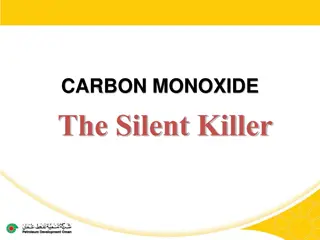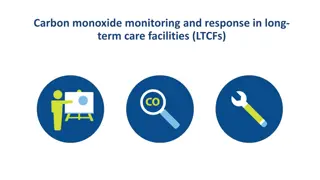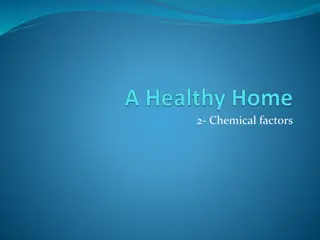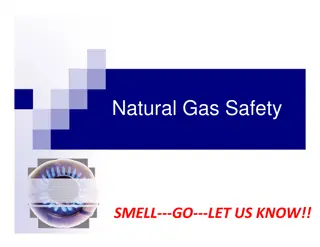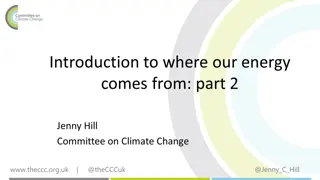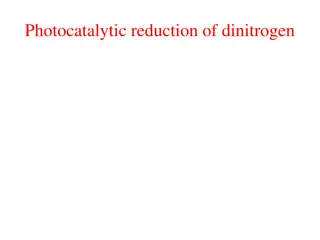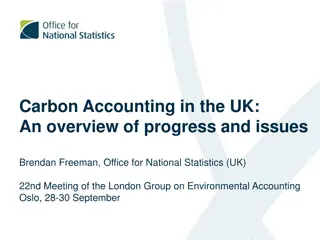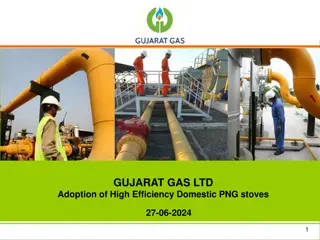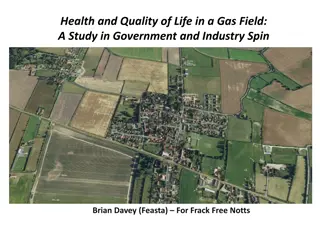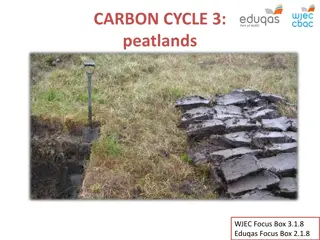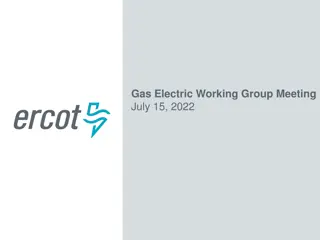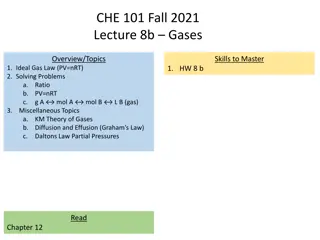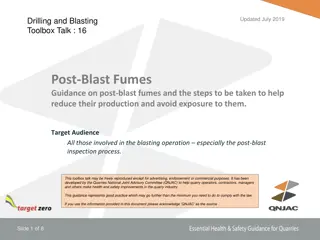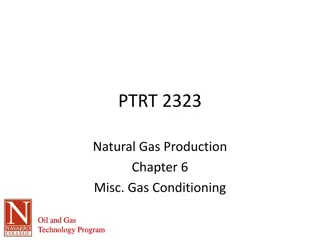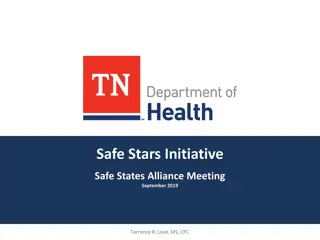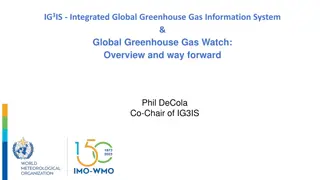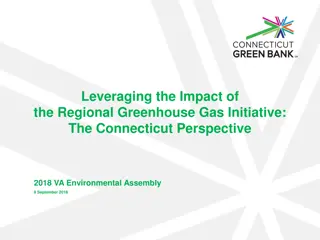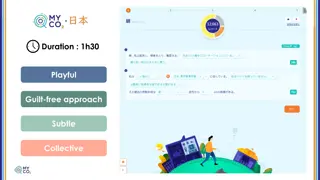Promoting Carbon Monoxide Awareness: Gas Safe Charity Initiative
Gas Safe Charity, through its Think CO campaign, aims to raise awareness of the dangers of carbon monoxide poisoning. By working with organizations across the UK, the project team educates staff and volunteers on spotting the risks and symptoms of CO exposure, ultimately aiming to save lives and ensure safety in vulnerable individuals' homes.
Download Presentation

Please find below an Image/Link to download the presentation.
The content on the website is provided AS IS for your information and personal use only. It may not be sold, licensed, or shared on other websites without obtaining consent from the author. Download presentation by click this link. If you encounter any issues during the download, it is possible that the publisher has removed the file from their server.
E N D
Presentation Transcript
Gas Safe Charity Think CO Promoting Carbon Monoxide Awareness
How you can help by Thinking CO GSC is a registered charity in England. Charity number 1131987
Think CO its aim The project aims to raise awareness of the signs and symptoms of CO (carbon monoxide) poisoning risks with people who work in the homes of vulnerable people. Our goal is by helping you to Think CO when you are in people s homes, we can save lives together and keep you safe. We need your help to do this.
Think CO how it works The project team is working with organisations like yours across the UK to raise awareness of the signs and symptoms of CO poisoning with staff and volunteers who work in the homes of vulnerable people. By the end of this briefing, you will know the signs and symptoms of CO and also know what to do should you suspect that CO is present.
What does CO mean to you? What words spring to mind when you think carbon monoxide ? Has anyone had any personal experiences with CO they want to share?
Carbon Monoxide (CO) is Dangerous Not only is CO odourless, tasteless and invisible it is extremely toxic. Low Level Exposure Suspect many more thousands of people are affected through low level exposure. Lethal Brain Damage Exposure can cause brain damage and affect the nervous system and memory Approx. 40-50 people in the UK die each year A&E Is responsible for sending 4,000 people to A&E per annum and 200 are admitted.
How do you spot the risks? Yellow/orange lazy flames (instead of blue) Sooty, yellow or brown marks around the gas fire/cooker Excessive condensation windows and walls Signs of scorching around the fire Pilot light keeps going out ACTION: When you visit a client s home, keep a look out for blocked ventilation sources such as chimneys, flues and air vents
Remember its not just mains gas Any carbon based fuel that does not burn properly is a risk Liquid Petroleum Gas (LPG) Coal fires Charcoal BBQs Peat Wood fires (incl. burners) Petrol / oil engines and heaters Cooking practices
Clients protection CO Alarms - many different types but ensure it has BS EN 50291 code Costs vary - 20-60 Read instructions not too low and not too high CO rises very slowly Should have one in every place that has a potential source of CO Consider clients with sensory deprivation Annual boiler servicing and chimney cleaning
Symptoms What to look out and listen for 1. Common first symptom is being unusually tired for you 2. Similar to flu and food poisoning and seems to last a long time 3. Dizziness can lead to falls 4. Symptoms disappear or reduce when client is outside the home and reappear when they return 5. Other family members, visitors or pets suffer similar symptoms 6. Metallic taste in your mouth 7. Worse in winter
Emergency Scenario - what should you do 4 3 2 1 Get yourself and your client out of the house as soon as possible If you or your client feel unwell go to GP or to A&E Call emergency services Turn off gas, all appliances and open windows Remember - Don t put yourself at risk
Case study A worker for a charity told us her story that she was feeling tired, dizzy and nauseous. She went to her GP three times. On the first two occasions she was told that the most likely reason was that she was pregnant and was given pregnancy tests. Only on her third GP visit did she insist on other tests. The result was that she was suffering from CO poisoning which turned out to be from a badly fitted flue in her attic which meant she was sleeping in a bedroom with significant levels of CO present every night.
Case study Two workers from a housing association shared the story that an older man who was a tenant of the association kept coming to them complaining of tiredness and nausea. When they checked, he had a faulty boiler, which latterly had to be condemned, and a new one fitted. His GP has dismissed his symptoms as oldage .
Steps to take if you suspect there might be a risk of low level CO poisoning in a client s home 6. An option might be to put CO detector in house for 24 hrs 1. You re concerned by what you ve seen or heard The key point is your organisation needs to agree the procedure 5. If risk to client or visitor continues agree action with manager 2. Suggest a registered gas engineer visits but remember cost may be a worry for the client 4.See if any support is available (see FAQs) 3. Talk to your manager or supervisor if not resolved
What happens if the gas is turned off? If a vulnerable client has their gas turned off, your organisation should aim to ensure there is a procedure to follow to provide emergency heating/cooking and help to address any problems that arise. Get to know what your organisation s policy and practice is. See the Think CO FAQs sheet and your organisation s policy for ideas of who to contact to help with servicing, new boilers, heaters, cooking appliances etc
Finally the Think CO Top Tips Read the Think CO handout Encourage your clients to get their gas appliances checked annually and to always use a Gas Safe Registered engineer (www.gassaferegister.co.uk / 0800 408 5500) Encourage clients to sweep any chimneys regularly Advise clients to fit an audible CO alarm and make sure it meets the BS EN 50291 standard Look out for the poster Listen to your clients
Quiz How many people on average die p.a. from CO poisoning in UK? What circumstances generates carbon monoxide gas? What colour gas flame do you need to be wary of? What are the main sources of CO in the home? What are similarities between a bad hangover and CO poisoning? What kind of engineer should service your boiler? What are the dates of Gas Safe Week in 2017? What should you look for in a CO detector? Why might CO prevention reduce hospital admissions? Why might SMART meters help reduce CO problems?



